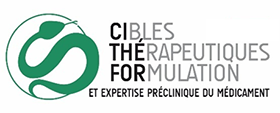Un article intitulé "Monitoring of Gold Biodistribution from Nanoparticles Using a HPLC-Visible Method." vient de paraître dans "Separations"
Auteurs : Chaigneau, T.; Pallotta, A.; Benaddi, F.Z.; Sancey, L.; Chakir, S.; Boudier, A.; Clarot, I.
Separations 2021, 8, 215. https://doi.org/10.3390/separations8110215
Abstract
There is intensive research using gold nanoparticles for biomedical purposes, which have many advantages such as ease of synthesis and high reactivity. Their possible small size (<10 nm) can lead to the crossing of biological membranes and then to problematic dissemination and storage in organs that must be controlled and evaluated. In this work, a simple isocratic HPLC method was developed and validated to quantify the gold coming from nanoparticles in different biological samples. After a first carbonization step at 900 °C, the nanoparticles were oxidized by dibroma under acidic conditions, leading to tetrachloroaurate ions that could form ion pairs when adding rhodamine B. Finally, ion pairs were extracted and rhodamine B was evaluated to quantify the corresponding gold concentration by reversed-phase HPLC with visible detection. The method was validated for different organs (liver, spleen, lungs, kidneys, or brain) and fluids (plasma and urine) from rats and mice. Lastly, the developed method was used to evaluate the content of gold in organs and fluids after intravenous (IV) injection of nanoparticles.

